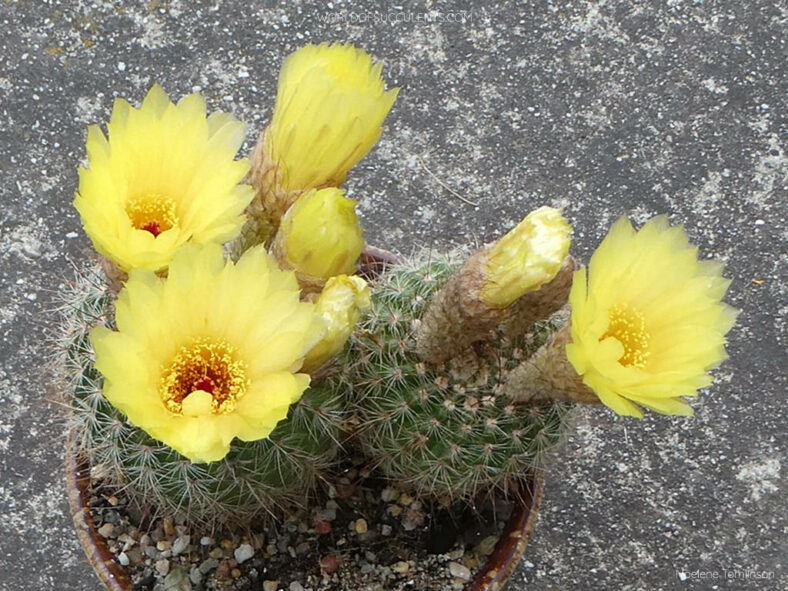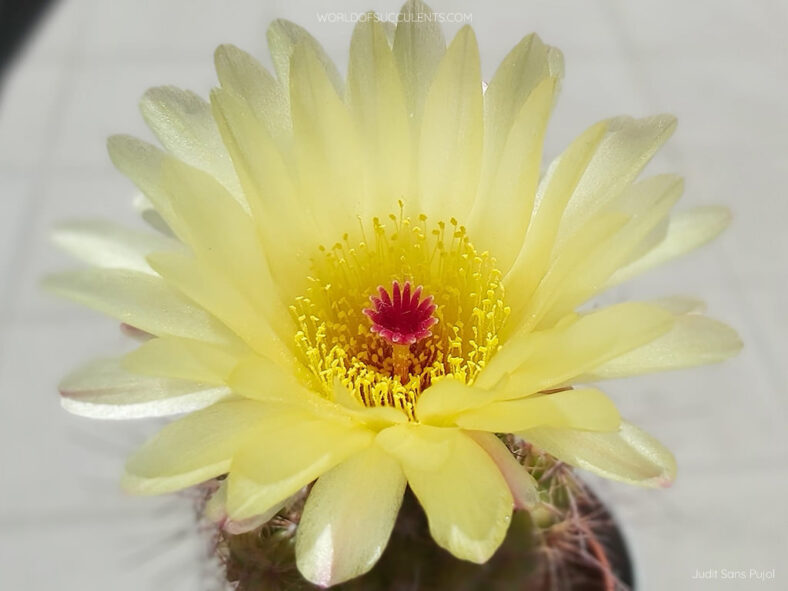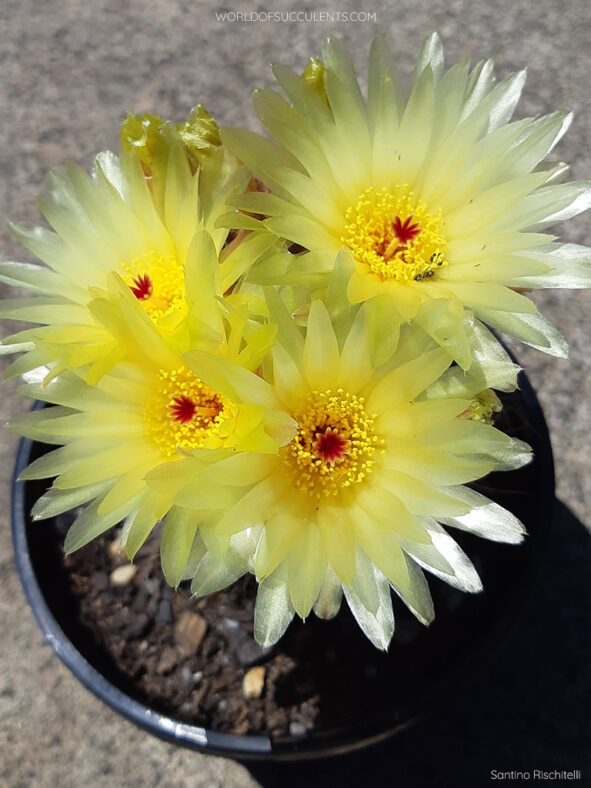Parodia concinna, commonly known as Sun Cup, is a small cactus native to Brazil and Uruguay. It has received the Award of Garden Merit of the Royal Horticultural Society for outstanding value in cultivation.
Scientific Name
Parodia concinna (Monv.) N.P.Taylor
Common Name(s)
Sun Cup
Synonym(s)
Echinocactus concinnus, Malacocarpus concinnus, Notocactus apricus var. concinnus, Notocactus concinnus, Peronocactus concinnus
Scientific Classification
Family: Cactaceae
Subfamily: Cactoideae
Tribe: Notocacteae
Genus: Parodia
Etymology
The specific epithet "concinna (pronounced kon-kin-na)" means "neat, elegant, clever" and refers to the habit and overall appearance of the plant.
Origin
Parodia concinna is native to southern Brazil (Rio Grande do Sul) and Uruguay. It grows on rocky outcrops in pampa grasslands at elevations between 65 and 980 feet (20 and 300 m) above sea level.
Description
Parodia concinna is a small cactus with a depressed spherical stem with 15 to 32 slightly tuberculate ribs lined with clusters of spines that emerge from wooly areoles between the tubercles. It tends to be a solitary grower, reaching 5.2 inches (13 cm) in height and 4 inches (10 cm) in diameter at maturity. Each areole bears 9 to 30 radial spines measuring up to 0.3 inches (0.7 cm) long and 1 to 4 longer central spines measuring up to 1 inch (2.5 cm) long. The spines are spreading, flexible, and whitish or yellowish.
During the summer, the plant usually produces one to five large, funnel-shaped flowers at the top of the stem. The flowers can grow up to 3.2 inches (8 cm) long and nearly equal in diameter. They have shiny yellow petals with reddish tips and scarlet stigma lobes in the center. If pollinated, the flowers are followed by egg-shaped fruits, about 0.6 inches (1.5 cm) long, which dry and split open when mature. They contain more than 100 shiny black seeds.

How to Grow and Care for Parodia concinna
Light: Generally, Parodia concinna can handle direct sun in the morning and afternoon, but it prefers partial shade during midday. So, place the plant outdoors anywhere it can receive bright, indirect sunlight. When growing indoors, choose a sunny windowsill and rotate the pot every two weeks to encourage balanced growth. However, move it outdoors in the spring, if possible.
Soil: Good drainage is crucial for a healthy plant. Therefore, use commercial soil for cacti or make your own well-draining mix with mineral grit, such as coarse sand, perlite, or pumice.
Hardiness: This cactus thrives in warm, desert-like conditions but will not survive a hard frost. So, if there is a risk of freezing temperatures, it is best to plant it in a container that can be brought indoors. Parodia concinna grows best in USDA Plant Hardiness Zones 9b to 11b, with average minimum winter temperatures ranging from 25 to 50 °F (-3.9 to 10 °C).
Watering: During the growing season, water deeply, but allow the soil to dry out to the touch between waterings. When it goes dormant during the winter, the plant needs much less water than usual. Therefore, water sparingly.
Fertilizing: While not necessary, Parodia concinna will respond well to a low-balanced soluble fertilizer diluted to half the recommended strength. However, suspend feeding in winter.
Repotting: If you grow this cactus in a container, repot as needed from spring to early summer. However, ensure the soil is dry before you start, and always pot it in a container with drainage holes.
Propagation: Since it rarely produces offsets, Parodia concinna is usually propagated by seeds. For best results, sow the seeds in spring.
See more at How to Grow and Care for Parodia.
Toxicity of Parodia concinna
Parodia concinna is non-toxic to humans or animals.
Links
- Back to genus Parodia
- Succupedia: Browse succulents by Scientific Name, Common Name, Genus, Family, USDA Hardiness Zone, Origin, or cacti by Genus
Photo Gallery
Click on a photo to see a larger version.


